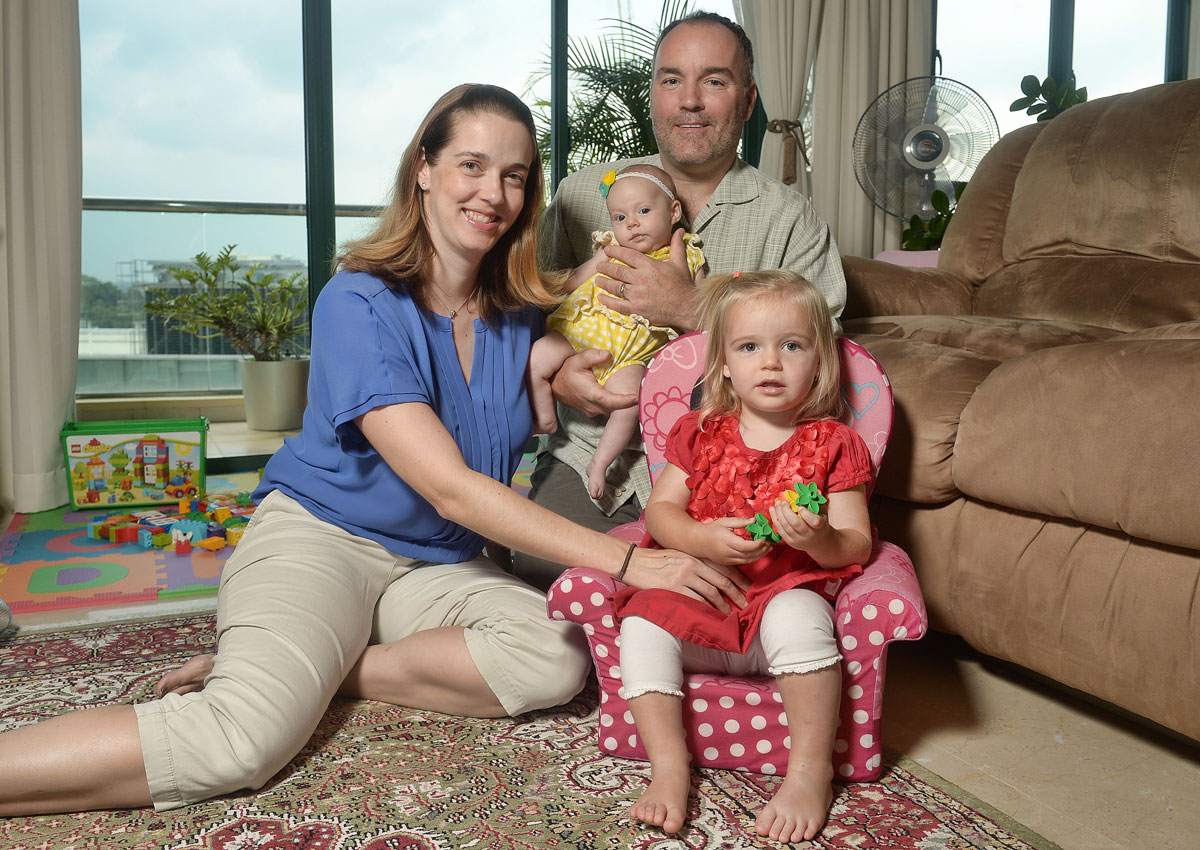When corporate pilot Cyril Letzelter gets the chance to fly to the United States every three months, he stocks up on clothes for himself, his wife and his two children.
“Children’s clothing at a Walmart in the US can cost US$3 (S$4.10) a piece but in Singapore, it’s at least US$15,” said the 48-year-old American, who is not surprised that Singapore has been found the most expensive city in the world for expatriates. He moved here in November 2013 with his wife Jennifer, a 35-year-old engineer.
They have two young daughters who are three months and 23 months old. Their maid is paid $1,000 a month.
Said Mr Letzelter: “We’re adventurous people and we were looking for a place to raise kids that could provide them with a unique culture.
“The pay was good and the math worked out well.”
The couple earn about $29,000 together, but even then, it meant making adjustments to their lifestyle.
Mr Letzelter’s previous house near Denver, Colorado was 610 sq m, while his wife had a house near Boston that was about half of that size. Now, their apartment in Thomson is about 150 sq m.
Mr Letzelter said: “Housing is crazy expensive here. We’re paying $4,400 in rent.
“For that amount, we can get two cars and a very big house in the US.”
They have also chosen not to buy a car despite owning two in the US.
Having bought their cars at about US$20,000 each there, they baulk at having to pay at least $80,000 here. But they like the relatively cheap public transport here.
Mrs Letzelter said: “Taxis are very cheap and public transportation is amazing. In other countries, we would have to have a car, but here, we have no problems.”
While they can adjust to a smaller home and public transport, getting used to local food has been a lot harder, so they pay extra for imported foodstuffs.
At $2,400 a month, their grocery bill here is triple what they usually spend in the US.
Mrs Letzelter said: “Grocery shopping is shockingly expensive. We try to shop at FairPrice because it’s cheaper, but oftentimes we pay a lot of extra money to get products that make us comfortable.”
While the family had initially planned to live here for a decade, they have recently started to contemplate a move back to the US.
Mr Letzelter has noticed a significant attempt by the Singapore Government and firms to hire more locals rather than expats since 2014.
“Far fewer expats are getting expat contracts, with many getting only local contracts, and the salaries are not as high,” he said.
His wife was only able to find work as an engineer on a local contract. She said she felt compelled to work as the high cost of living here meant that the couple could not meet their financial goals – saving for retirement and their children’s college funds – just on Mr Letzelter’s salary alone.
The couple said other American expats are thinking of moving out or have already done so.
Mrs Letzelter, a member of the American Women’s Association of Singapore, said the association used to have significantly more members. The improving US economy and a strengthening US dollar also make it tougher to stay here.
When Mr Letzelter first joined his company here in 2013, he was getting paid about 40 per cent more than he was in the US. But this has since narrowed to 20 per cent.
He said: “We really do like it here, but if the math doesn’t work out, we’ll go back earlier,” he said.
THE LETZELTERS’ AVERAGE MONTHLY EXPENSES
RENT: $4,400
GROCERIES: $2,400
PUBLIC TRANSPORT AND TAXIS: $800
EATING OUT: $500
EDUCATION: $1,000
HELPER: $1,000
UTILITIES: $350
ENTERTAINMENT: $200
TOTAL: $10,650 (all in Singapore dollars)
*Also spends $15,000 a year for travel back to the US
domteojy@sph.com.sg

This article was first published on March 27, 2016.
Get a copy of The Straits Times or go to straitstimes.com for more stories.






